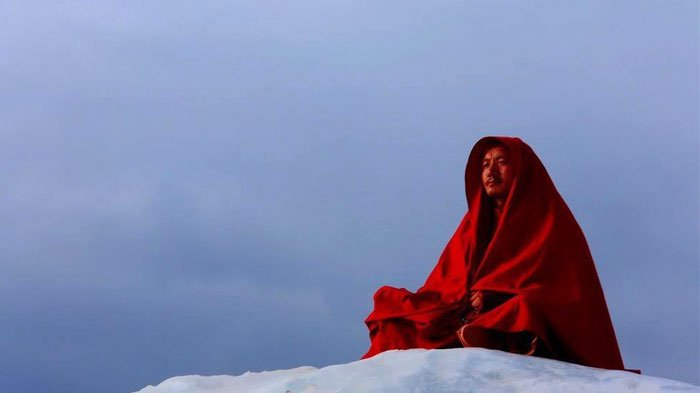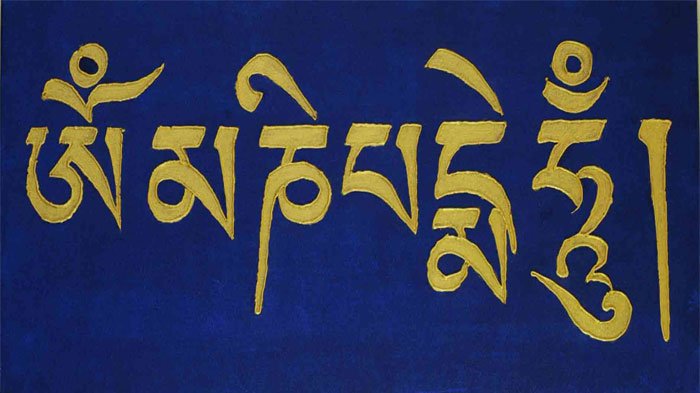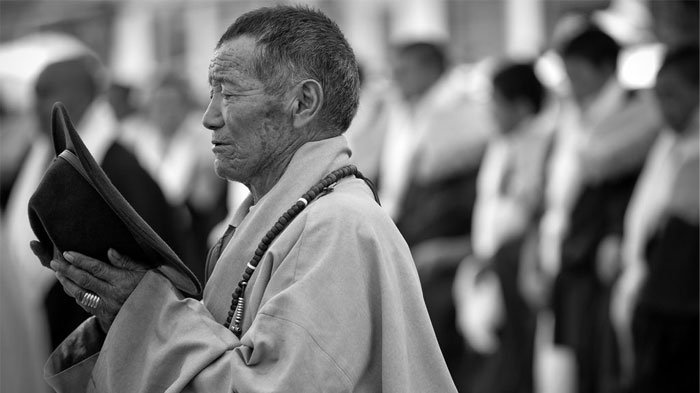
Exploring the Meaning of Mantra in Tibet
What’s been really fascinating is that in coming to Asia, we’ve been given the opportunity to see where the foundation of meditation really lies—in particular we’ve explored the Buddhist branch of meditation, which is so popular here. If you’re unsure of what exactly comprises Buddhist meditation is, don’t fret we’ll explain below; for now, just know its the practice that bore the popular term “mantra,” which you’ve undoubtedly heard tossed around in everyday conversation if you’ve spent any time in a major wellness hub, like California or Australia.
Here we’ll dive into what mantra really is, and explore why and how it can be so beneficial for us as we live in an increasingly fast-paced day and age. To start out, we must take it back to its origin story, found in Buddhist meditation.
The Basics of Buddhism and Buddhist Meditation
Buddhism is a faith that developed over twenty five hundred years ago when, according to legend, Siddhartha Gotama—the first Buddhist—became enlightened at the age of thirty five. Becoming enlightened is the ultimate goal of this religion, which values wisdom and understanding above all else. But there are other key pillars of the faith too, and these include morality and mindfulness.
 Buddhist Meditation
Buddhist Meditation
It is out of the value of mindfulness that meditation came to be an integral part of the faith. Being mindful means being aware of not only our actions, but also our thoughts, from which all actions stem. In order to become increasingly mindful, Buddhists devote their time to the practice of meditation which promotes this awareness. How? By allowing our overly-stimulated minds to quiet down, and in this process merely observe as thoughts enter our consciousness, not engaging them but instead choosing to let them pass.
This is the basic premise of meditation, and it promotes a more tranquil, less reactive and less anxious mindset. This ability to shift the way that we think makes it so useful for its practitioners, who tend to approach situations in their everyday lives in this manner, which leads to a more gracious, satisfying, blissful experience on earth.
Mantra in Buddhism
Where does Mantra fit into this practice of meditation? What even is it? Well, mantra can be explained by its etymology. When you break down the word you get “man,” which means mind, and “tra,” which means vehicle. So “mantra” thus means a vehicle/tool/instrument—however you best understand it—of the mind. It is a powerful strategy to incorporate in order to enter that long sought-after, ever-alluring state of deep meditation.
 The Turning Scripture
The Turning Scripture
To utilize this tool, you must understand how to put it into action. A mantra is a word or a phrase, and to use it, you merely repeat it over and over and over again. A mantra can be expressed either internally (silently) or externally (aloud). No matter which method you use, you must view your mantra as an object of concentration, a sound—either spoken or thought—to focus on. In focusing on it, your mind will let go of all else, thus achieving this state of bliss. If you want to really augment this experience, use visualizations too—this is particularly recommended for those mantras that are affiliated with the Buddha or the mythic Avalokitesvara, for you may visualize these figures easily (more on these mantras below).
 Mantra in Buddhism
Mantra in Buddhism
Benefits of Buddhist Mantra
In addition to quieting the mind—reason in and of itself to take up the practice, mantras are believed to protect it. According to Tibetan culture, they save us from bodily diseases, natural disasters, bad karma, and other troubles, while also bringing believers blessings, good health, longevity, and wisdom to carry on into their next life. A specific mantra that is cited for its ability to deliver these benefits is this one: Om tare tutare ture soha,
 Tibentan Monk
Tibentan Monk
Practitioners also express that these mantras have the ability to deliver immediate energy. So, maybe the next time you feel yourself reaching for that 3PM espresso, you’d be better off trying some chanting of your own.
Need more incentive? If you have any desire to set goals or “intentions” for yourself—and who isn’t, really—mantras can be of service in this arena. With the clarity of mind they promote, many practitioners have espoused the ability of mantra to help you discover new intentions you want to set, and realize the path to your existing ones.
Cultural Significance
In Tibet, mantras are chanted in Sanskrit, in order to preserve the original meaning and refrain from losing anything significant in translation. The chants are practiced not only in solitude, but also in groups. Those of the faith come together for a more “formal” meditation. It is used sometimes in order to prepare their minds for a silent meditation that will follow, or in other cases it may be used for ritualistic purposes.
 Tibetan Buddhist Meditation
Tibetan Buddhist Meditation
Popular chants include:
•Om muni muni maha muni Shakyamuni svaha: associated with the Historical Buddha.
•Om tare tuttare ture svaha: associated with the Mother of the Buddhas Jetson, Green Arya Tara.
•Om mani padme hum: associated with the mythical figure Avalokiteshvara.
The last of these is perhaps the most widely practiced of all in Tibet, and it involves the use of prayer beads. The significance of the mantra comes from an ancient Tibetan text, from the fourth century BC. In this text, the Buddha tells a bodhisattva—one who is on the path to becoming a Buddha—that this mantra has the power to provide its chanter samadhi—a state of deep meditation, also known as the final step in the Noble Eightfold Path to attaining the illustrious nirvana.
So, while other mantras work to quiet the mind and promote all those wonderful, aforementioned benefits, it is understandable that the mantra of Avalokiteshvara is the most highly regarded—for it has that unique power of delivering its practitioners all that they are striving to achieve in the religious realm of their lives.
Where to Take Part
Chanting in groups creates a great sense of community, allowing the people to delight in their faith as a collective whole, which only serves to strengthen their belief and their overall well being—a win win. So if you’re interested in taking part in a group chant while visiting Tibet, you’ll get nothing but encouragement from us. If you’re curious about where to go, read on.
Great Prayer Festival
This is an entire celebration devoted to chanting and other spiritual practices. Founded in the early 1400s in honour of the founder of the Gelug Sect of Tibetan Buddhism, this is a long-standing festival that remains one of the most authentic ways to take part in the mantra-chanting. As such, it makes the top our list of suggestions for you. It takes place in January and typically lasts almost the entire month.
 Great Prayer Festival
Great Prayer Festival
Tibetan Buddhist Temples
The great thing is, you can find group-chanting taking place in any temple in Tibet. Some of the most astounding temples are the Drepung Monastery, the Potala Palace and the Jokhang Temple, all of which are located in Lhasa.
 Tbetan Monastery
Tbetan Monastery
So, what do you think of this practice of mantra? Do you buy into it? Would you try it?

Hi, I am a pretty and outgoing Tibetan girl. I have 6-year experience in guiding all kinds of Tibet tours.


.jpg)




0 Comment ON "Exploring the Meaning of Mantra in Tibet"